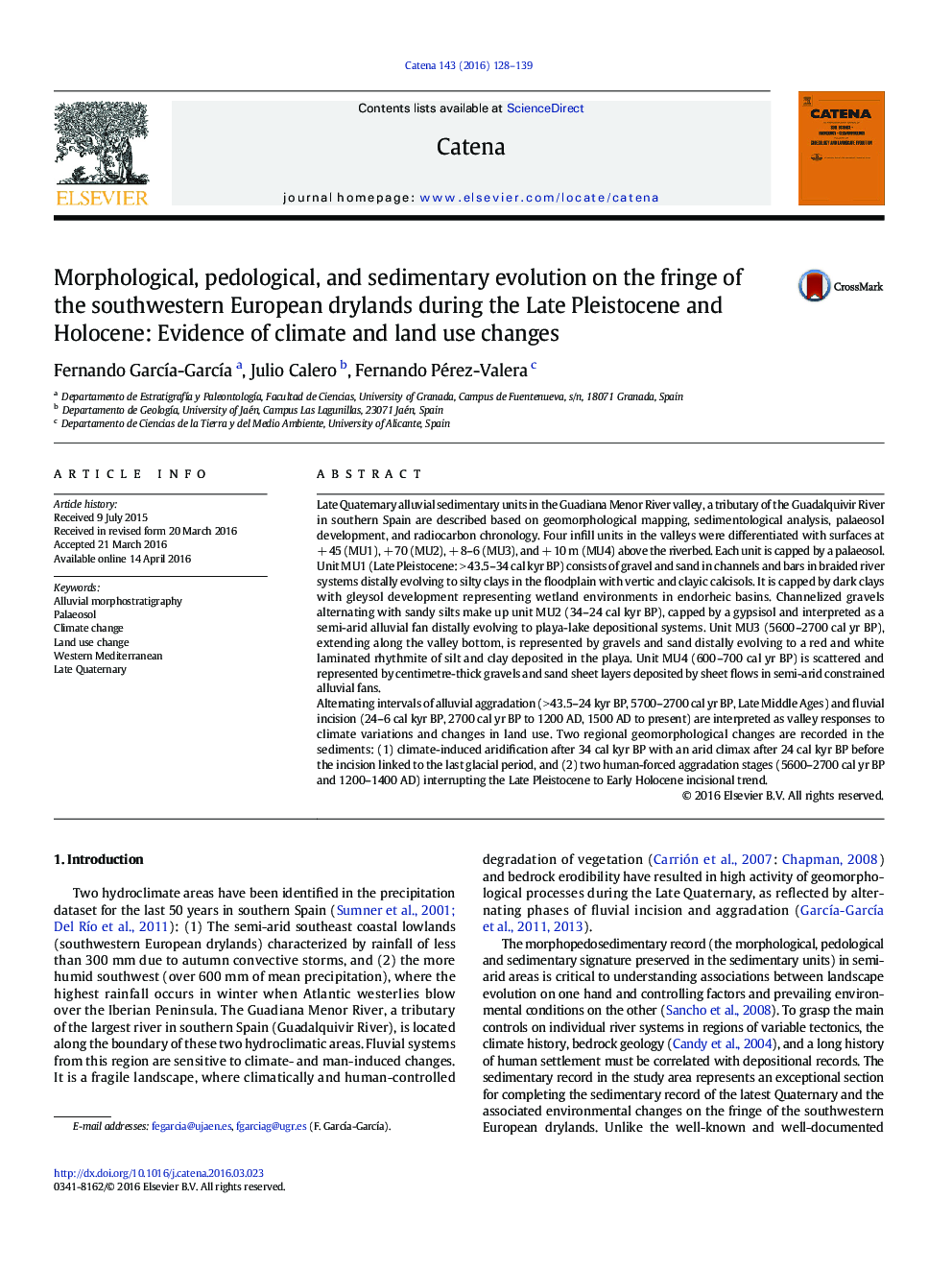| کد مقاله | کد نشریه | سال انتشار | مقاله انگلیسی | نسخه تمام متن |
|---|---|---|---|---|
| 6407867 | 1629209 | 2016 | 12 صفحه PDF | دانلود رایگان |

- Environmental changes in the frontier of the Southwestern Europe drylands.
- Qualitative record of climate and land use changes during the Late Quaternary.
- Extensive vs intensive legacy sediment.
Late Quaternary alluvial sedimentary units in the Guadiana Menor River valley, a tributary of the Guadalquivir River in southern Spain are described based on geomorphological mapping, sedimentological analysis, palaeosol development, and radiocarbon chronology. Four infill units in the valleys were differentiated with surfaces at + 45 (MU1), + 70 (MU2), + 8-6 (MU3), and + 10 m (MU4) above the riverbed. Each unit is capped by a palaeosol.Unit MU1 (Late Pleistocene: > 43.5-34 cal kyr BP) consists of gravel and sand in channels and bars in braided river systems distally evolving to silty clays in the floodplain with vertic and clayic calcisols. It is capped by dark clays with gleysol development representing wetland environments in endorheic basins. Channelized gravels alternating with sandy silts make up unit MU2 (34-24 cal kyr BP), capped by a gypsisol and interpreted as a semi-arid alluvial fan distally evolving to playa-lake depositional systems. Unit MU3 (5600-2700 cal yr BP), extending along the valley bottom, is represented by gravels and sand distally evolving to a red and white laminated rhythmite of silt and clay deposited in the playa. Unit MU4 (600-700 cal yr BP) is scattered and represented by centimetre-thick gravels and sand sheet layers deposited by sheet flows in semi-arid constrained alluvial fans.Alternating intervals of alluvial aggradation (> 43.5-24 kyr BP, 5700-2700 cal yr BP, Late Middle Ages) and fluvial incision (24-6 cal kyr BP, 2700 cal yr BP to 1200 AD, 1500 AD to present) are interpreted as valley responses to climate variations and changes in land use. Two regional geomorphological changes are recorded in the sediments: (1) climate-induced aridification after 34 cal kyr BP with an arid climax after 24 cal kyr BP before the incision linked to the last glacial period, and (2) two human-forced aggradation stages (5600-2700 cal yr BP and 1200-1400 AD) interrupting the Late Pleistocene to Early Holocene incisional trend.
Journal: CATENA - Volume 143, August 2016, Pages 128-139